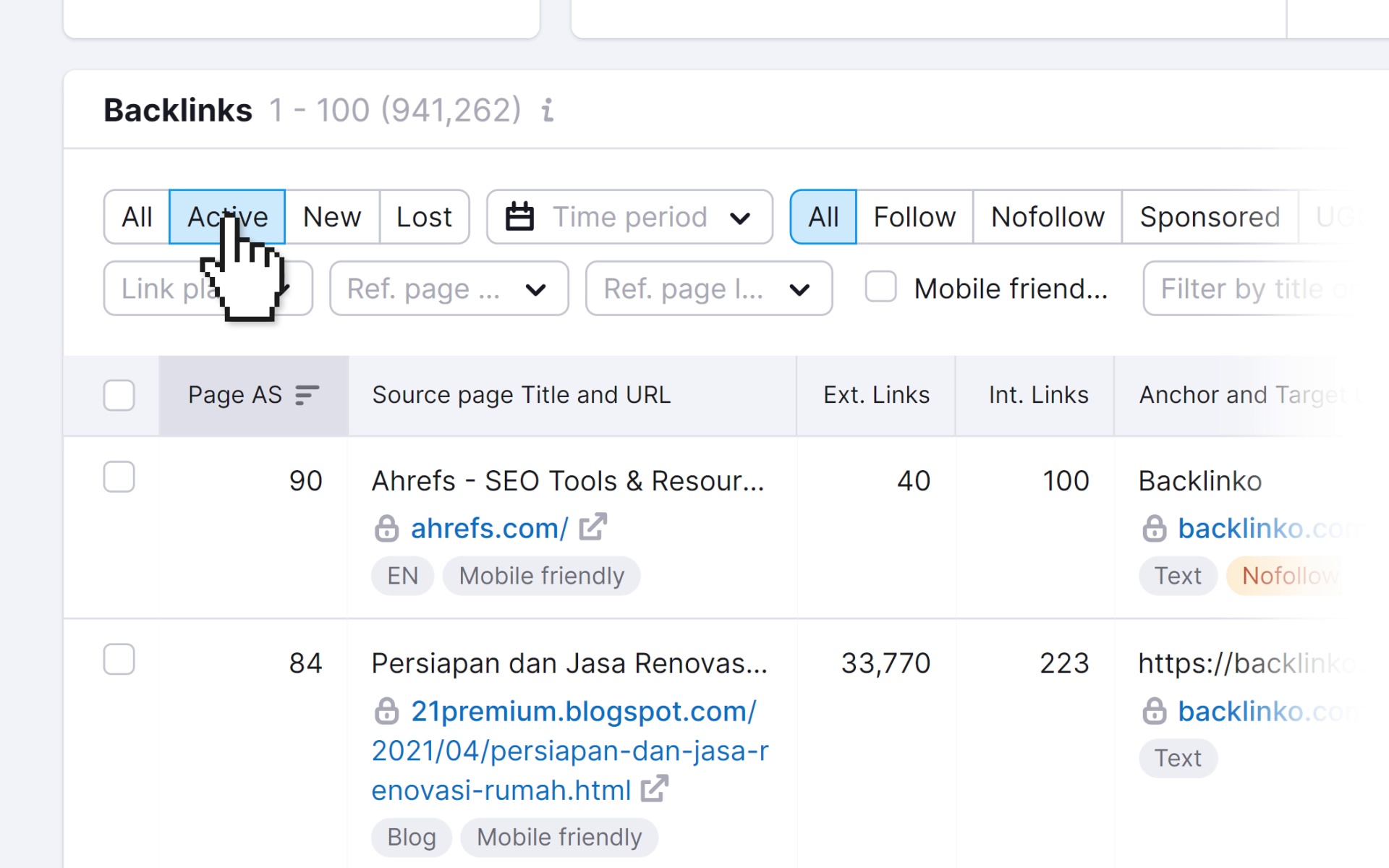Semrush Review: Details, Features & Pricing
Written by Brian Dean
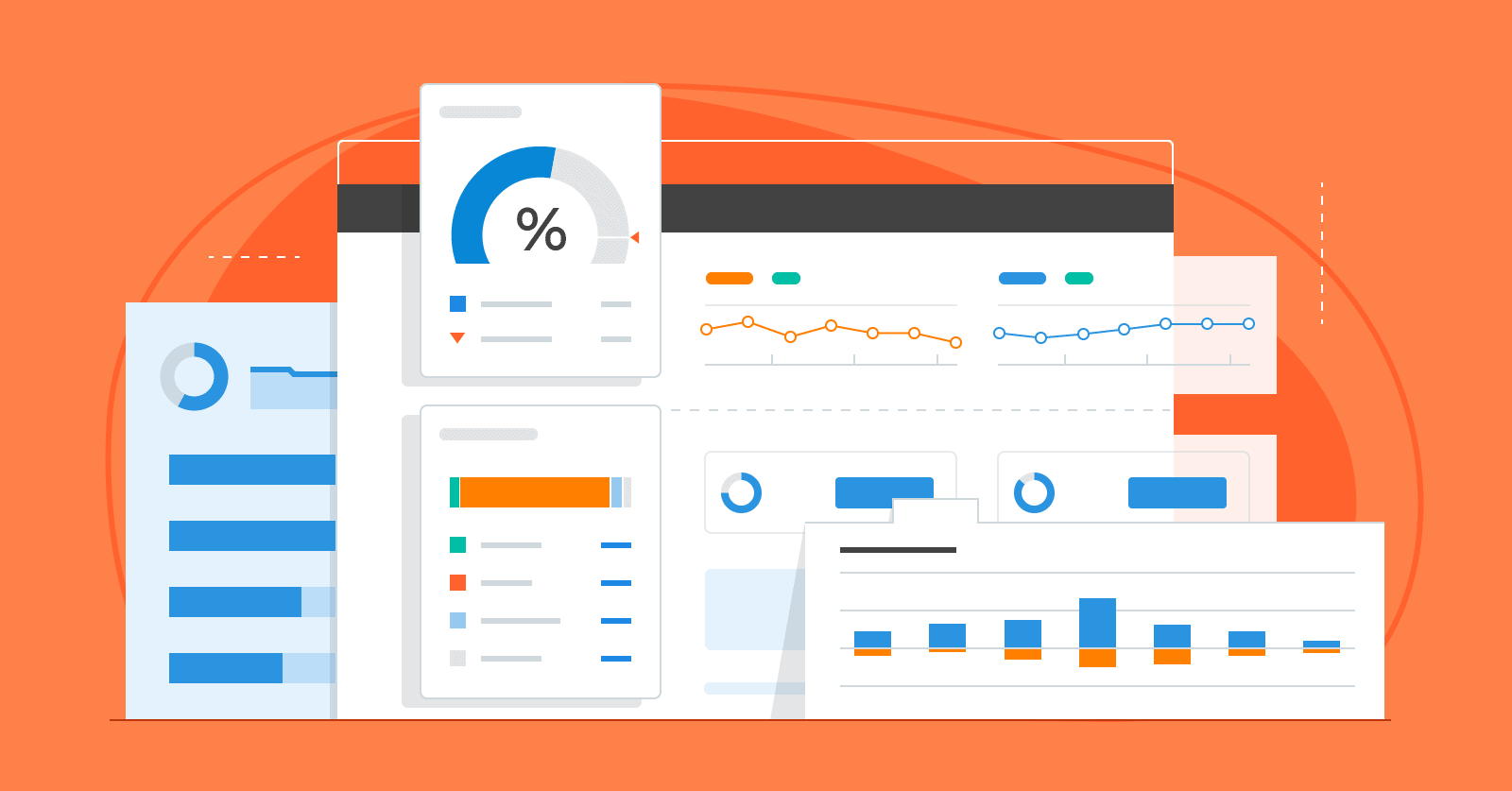
Here is my complete review of Semrush.
In this post you’ll see:
- What Semrush does well
- What Semrush doesn’t do well
- My opinion of Semrush’s SEO and PPC features
- Whether Semrush is worth the monthly fee
- A whole lot more
Let’s get started.
Domain Overview
This is a big picture overview of a site’s overall SEO and PPC marketing efforts.

And if you want to dig deeper, you can get details on a site’s organic traffic, backlinks, PPC campaigns, engagement metrics (like bounce rate), the site’s main competitors in Google search, and more.
This report is helpful if you want to quickly see how much traffic a site gets from SEO or Google Ads.
But the real value here comes from each of the detailed subreports. So let’s break down a few of these right now.
Organic Research
This feature is simple. Yet super powerful if you know how to use it.
Organic Research tells you how much traffic a site gets from Google. And how it’s changed over the years.

Yeah, it’s interesting to see how a competitor’s rankings have changed over time. But it’s not super useful.
The real value in this report is the regularly-updated list of the keywords that a site ranks for in organic Google search.

In my experience, reverse engineering your competitor’s keywords is one of the best keyword research strategies on the planet.
And Semrush is one of the best SEO tools on the market for this approach.
That’s because Semrush has a HUGE database of 21,1 billion keywords. And they update this list pretty much every day.

While not 100% accurate, Semrush’s organic traffic estimates are as accurate as you’ll find on the market.
The data is spot on 99 times out of a 100. But you will run into an edge case where the data is completely out of whack.
With that, let’s check out Semrush’s next major SEO-focused feature: Backlinks.
Semrush’s Backlink Analytics
Next up is Semrush’s backlink checker feature.
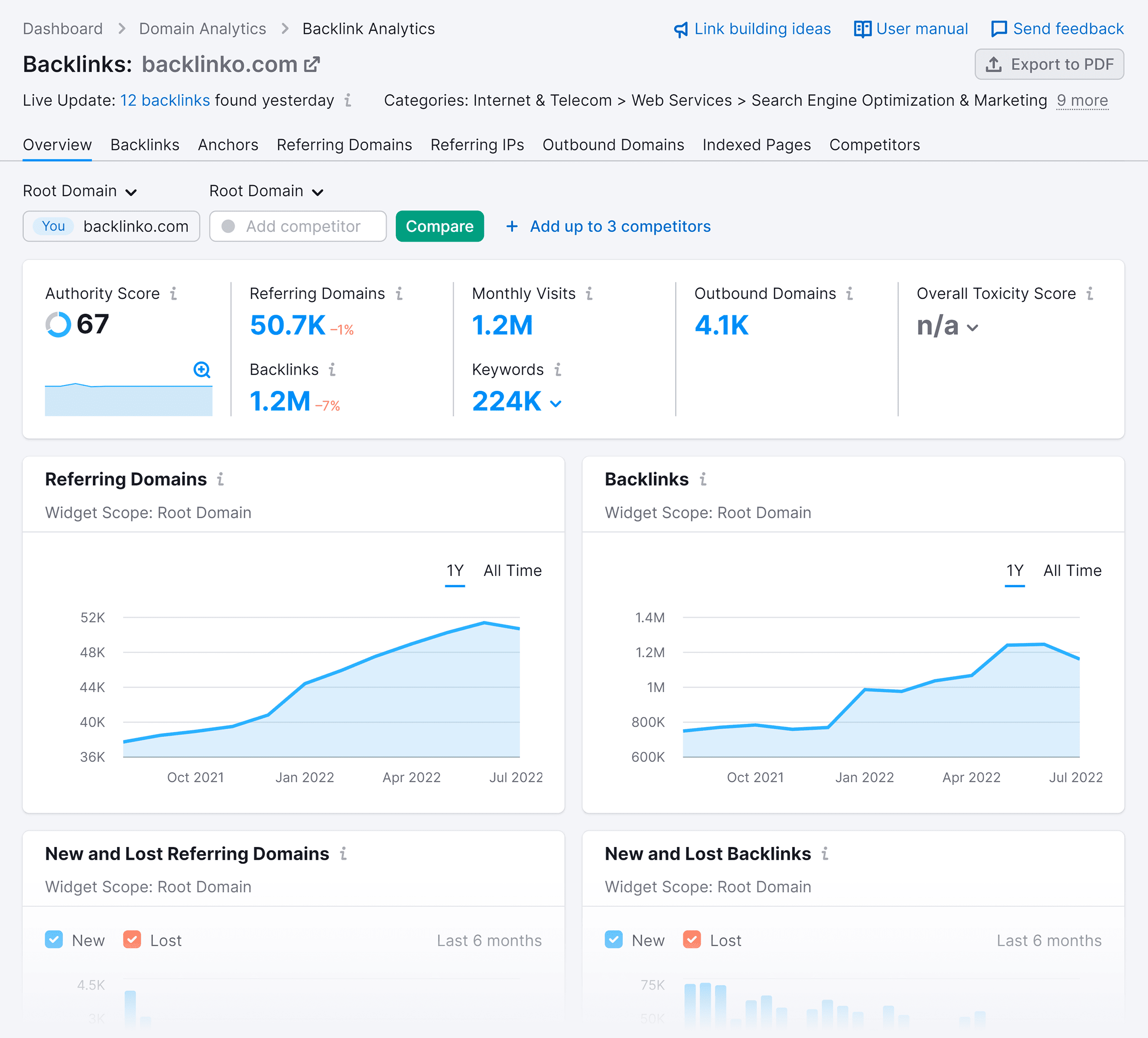
Overall, I think Semrush’s backlink checker is SUPER good.
That’s because Semrush has a massive link index. And it finds new pages and backlinks super quickly.
That’s all you can really ask for in a link analysis tool.
And while I do prefer the Ahrefs link analysis UI, Semrush’s is still really good.
Specifically, they have dozens of filters that you can use to find the backlinks that you want to find.
Overall, Semrush’s backlink checker is comparable to Ahrefs in many ways. It has a solid index. And a ton of features, like domain authority metrics (called “Authority Score” in Semrush), anchor text breakdown, number of links a site has received over time, and more.
Semrush’s backlink tool even has a few cool features that Ahrefs doesn’t have.
For example, Semrush actually breaks a site’s referring domains down into different categories.
For example, 25% of my backlinks come from sites in the “Marketing” niche. And another 25% are from websites that Semrush considers “Search Engine Optimization & Marketing”.

That sounds about right to me. My site is about digital marketing and SEO. So it makes sense that most of my links would come from other sites on those topics.
Semrush also shows you a list of websites that have similar link profiles.

This can be super helpful if you’re kicking off a link building campaign.
Why?
Because it can help you find the right sites to reverse engineer. After all, if a site has a similar link profile as you do, it probably means that they’re getting links from places that you want to get links from.
Advertising Research
Most SEO tools tack on a PPC feature as an afterthought.
But that’s not the case with Semrush. They’ve been PPC-focused since day 1.
And they continue to pour a ton of their resources into their PPC competitive analysis features.
In fact, you can use Semrush to see pretty much every ad that a competitor is running. And how much traffic those ads bring in.
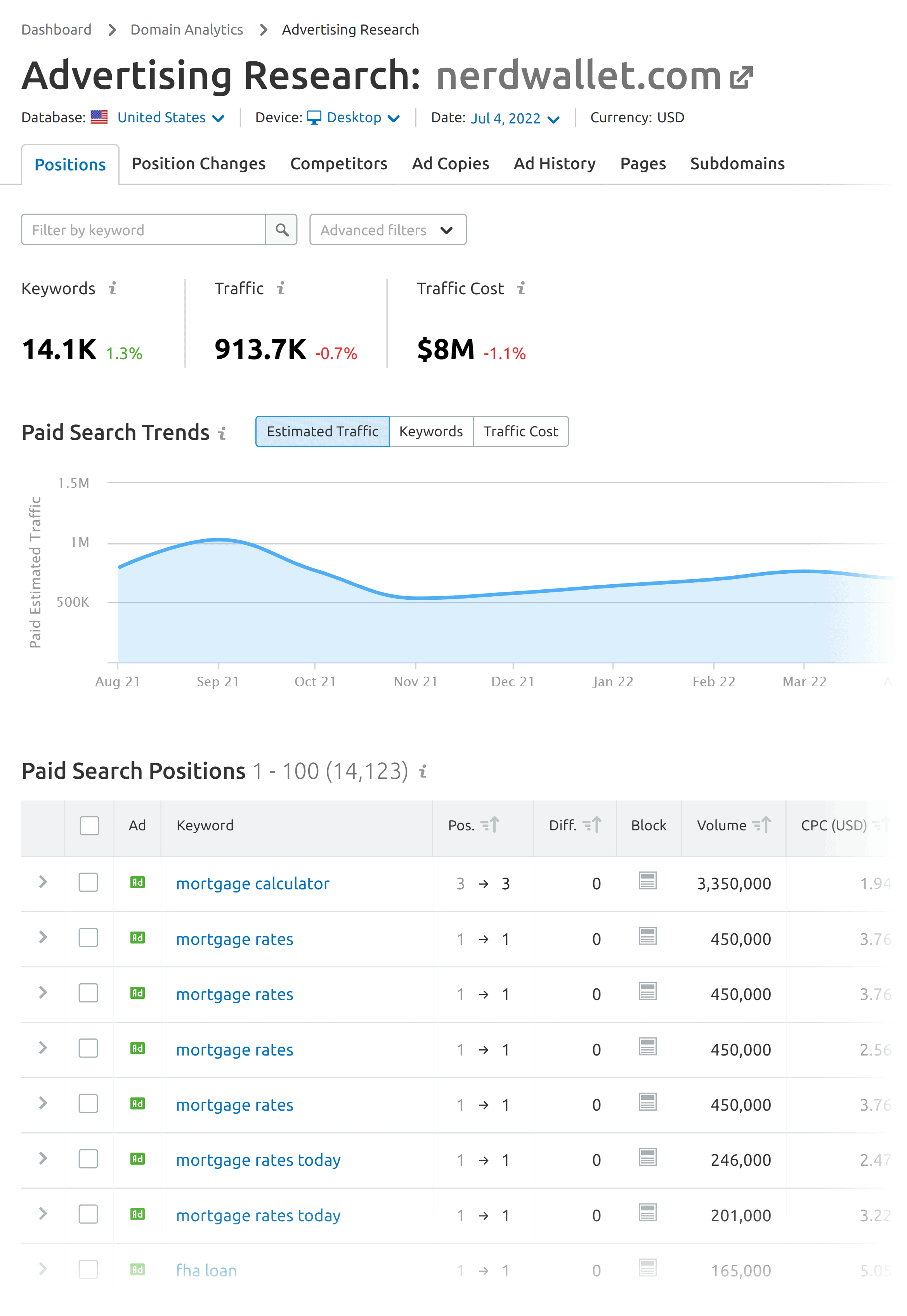
They even have estimated CPCs to give you an idea of how much that site is spending on Google Ads every month.
That’s already super valuable intel.
But the real gem here is the ability to see the exact ads that your top competitors are currently running.

If you’re familiar with Quality Score, you know that the #1 factor is your ads CTR. The higher your CTR, the less you’ll have to bid.
And if you see that a competitor has been using an ad for months or years, you KNOW that it’s getting a decent CTR. Otherwise, they wouldn’t be using that ad.
For example, if you look at this set of ads in the credit card niche, you can see that a good chunk of them use the same phrase.
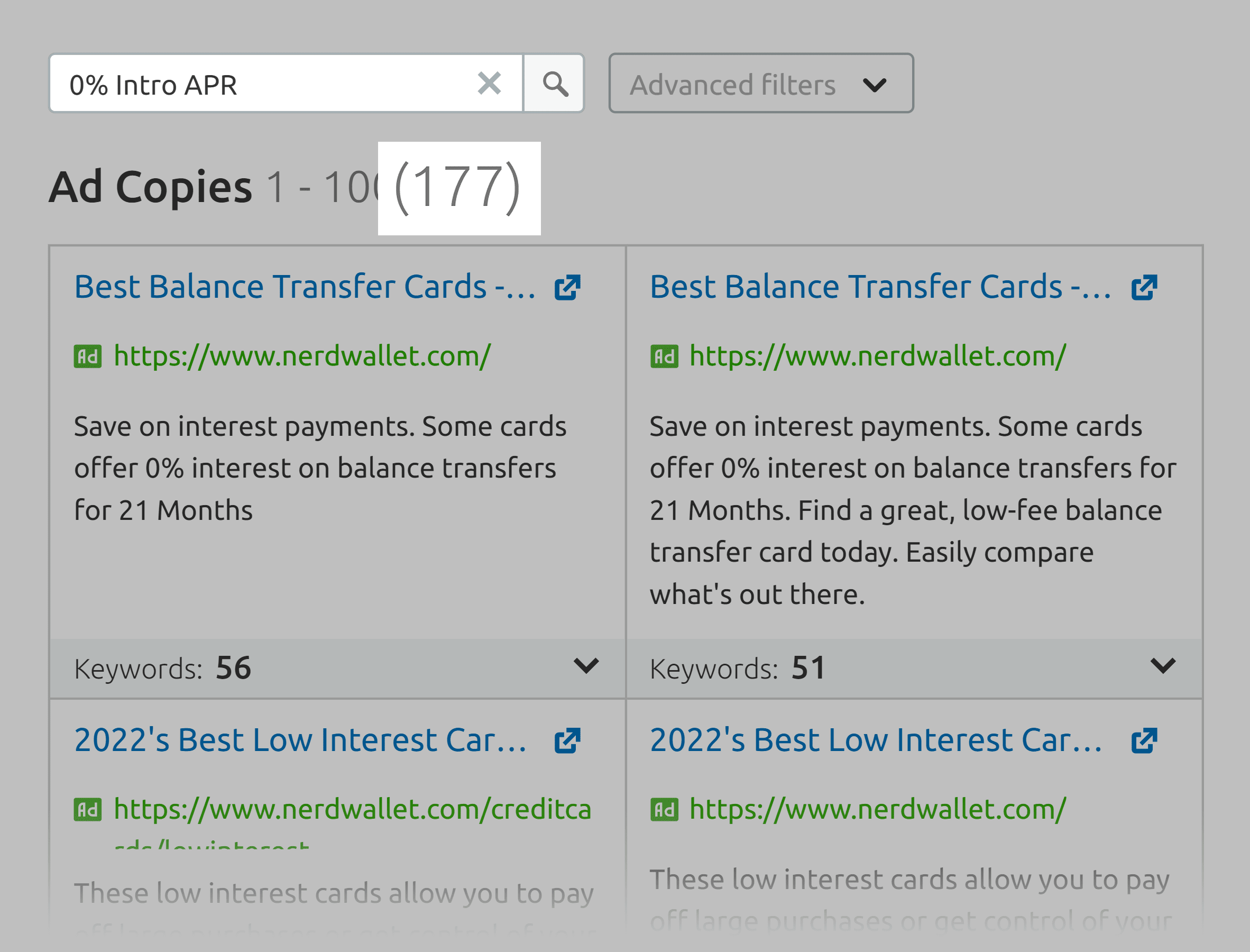
That’s definitely something you want to test in your ads.
And if you want to see even more ad copy and keywords to use as part of your PPC campaigns, hit the “Competitor” tab. And you’ll get a list of sites that are all bidding on the same keywords.

To be clear: Semrush isn’t just for PPC ads.
They also have a solid display advertising feature in their app center called AdClarity.
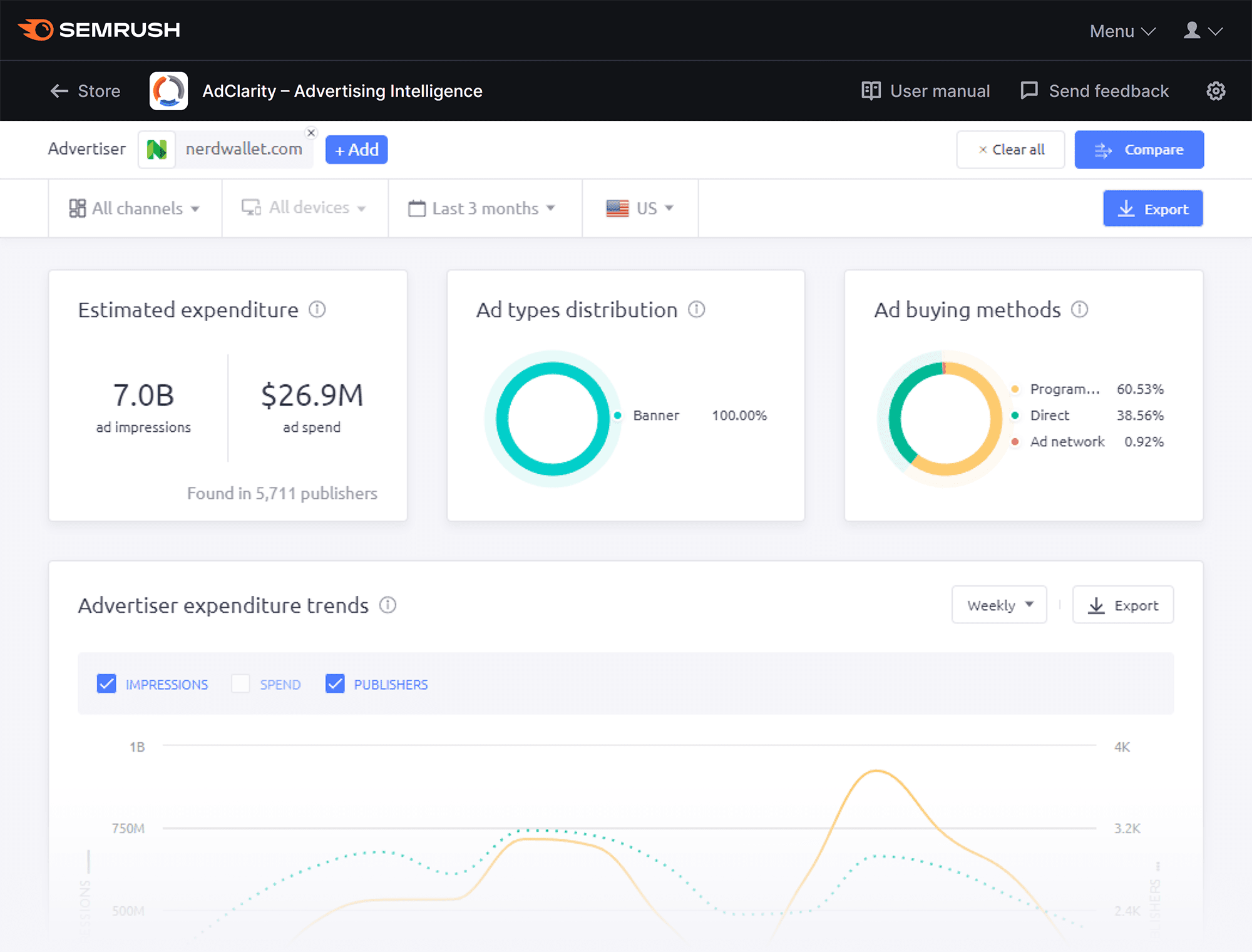
Not only can you see their display ads.

But you can even get a list of the exact sites that they’re advertising on.
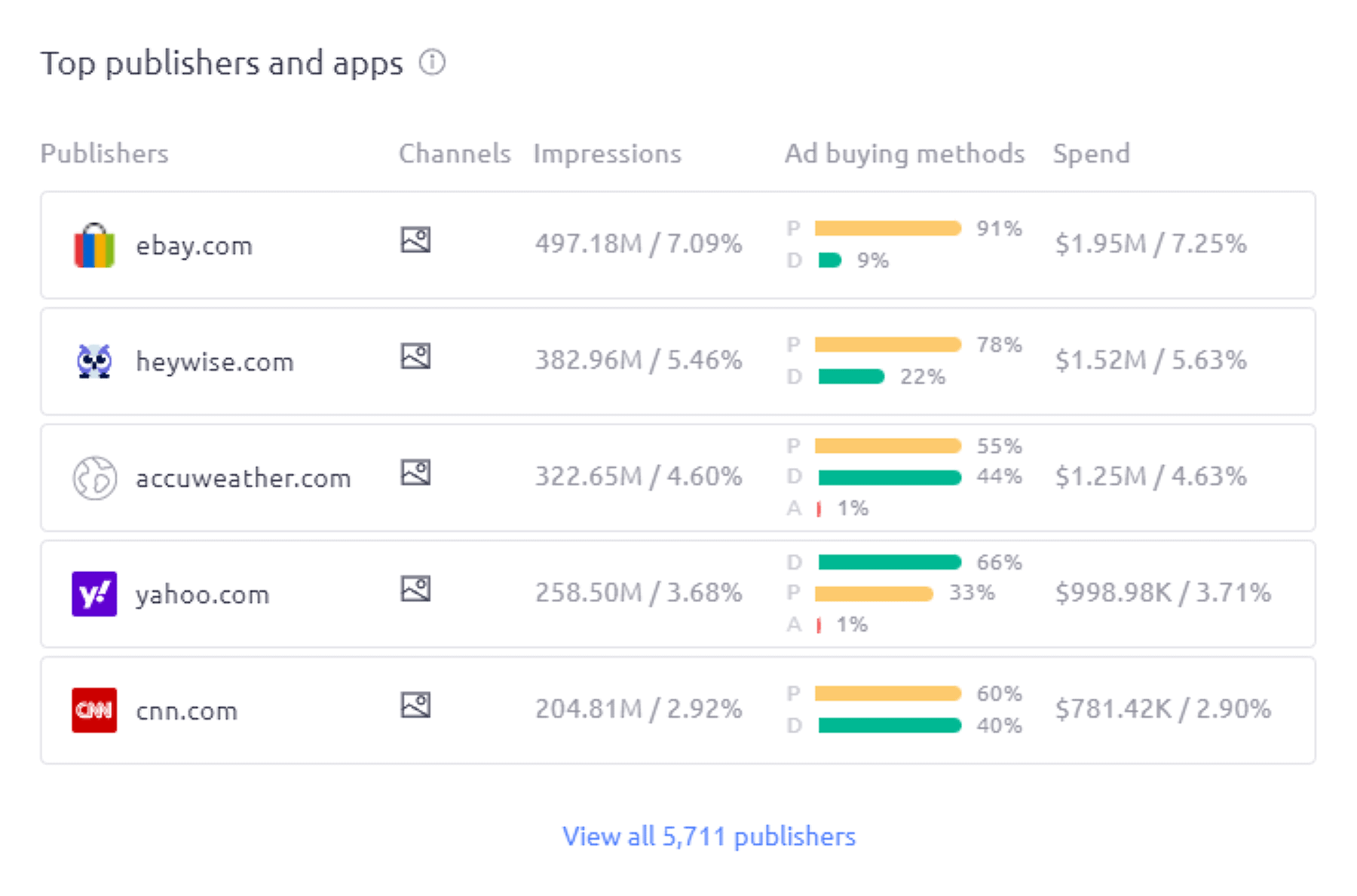
Overall, Advertising Research is one of Semrush’s best features.
Traffic Analytics
Traffic Analytics is Semrush’s answer to SimilarWeb.
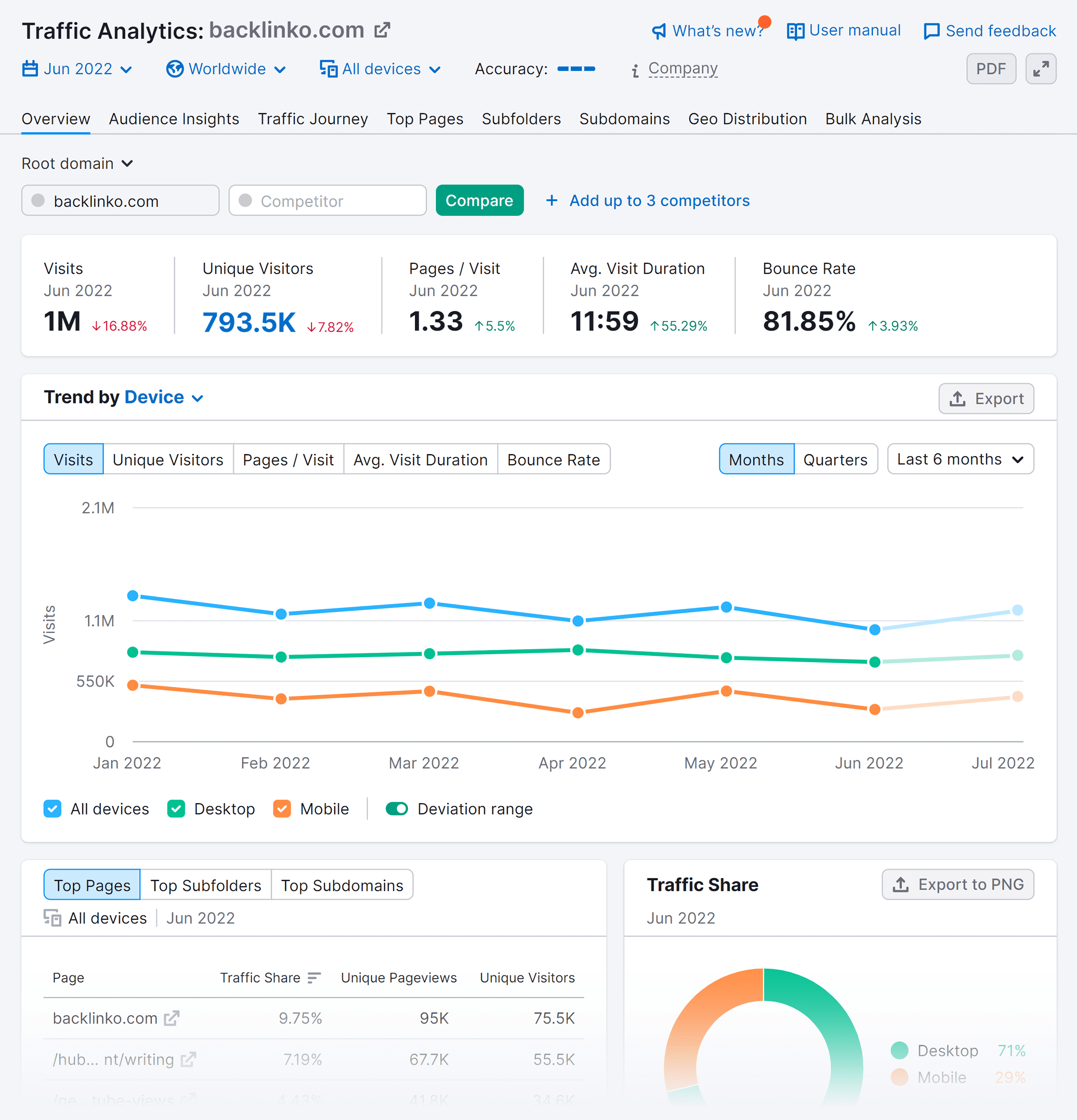
In other words: Traffic Analytics shows you non-Google sources of a site’s traffic. And how site visitors interact with that site when they get there.
For example, Semrush estimates that my site gets 793.5k unique visitors per month.

This estimate includes SEO. But also takes into account YouTube, social media, other blogs, and direct traffic.
How accurate is that number?
Well, according to my Google Analytics, we got 465,266 unique visitors (“Users”) over the last 30 days.

So at least from this one example, Semrush’s traffic estimates are a bit higher.
Market Explorer
Market Explorer is one of many new features that Semrush is adding all the time.
(In fact, that’s one of the things I like about the tool: they’re ALWAYS adding new features. These new features aren’t always useful to me. But some are.)
Anyway, Market Explorer is designed to show you the landscape of a given niche.
For example, when I put Backlinko into Market Explorer, it shows me the “Established Players” (like Moz) and “Game Changers” that are growing quickly.
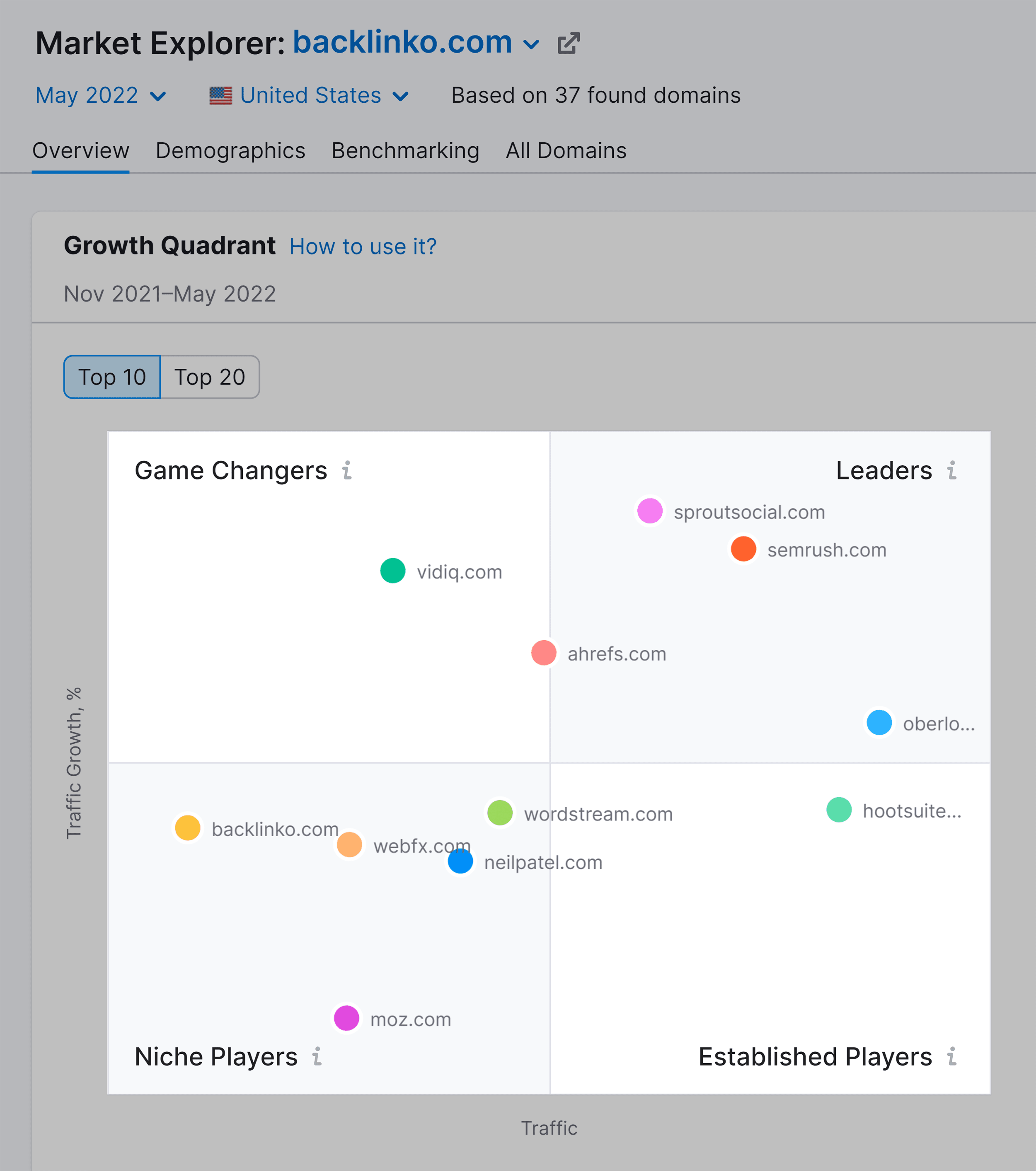
You can even see which sites get the lion’s share of traffic in that space.
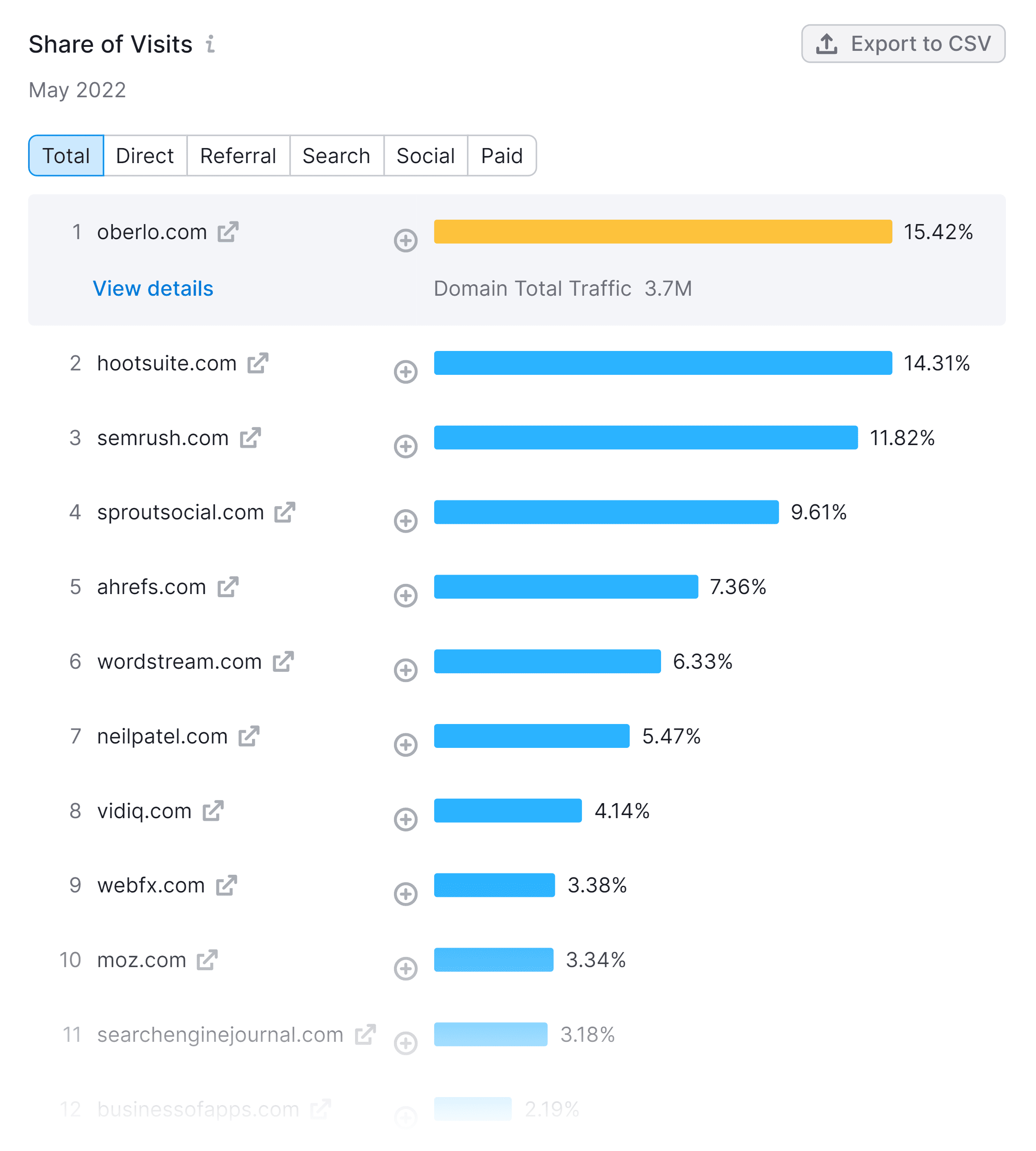
Why is this useful?
Well, let’s say that you just took on a new client. And they’re in a niche that you know nothing about.
It can take days of research to figure out who you’re even competing against. And who the established sites are.
And Semrush’s Market Explorer report makes this sort of market analysis much easier.
Keyword Overview
Here’s where you can do a deep analysis on a single keyword.

In this report you can see a keyword’s search volume, keyword difficulty, CPC estimates and more.
And you can see the first page competition for that keyword in the SERPs.

So yeah, nothing really groundbreaking here. This is the kind of data you’d expect from any keyword tool.
What I like about this feature is the massive set of keyword ideas that you get.
Specifically, Semrush generates keyword ideas in the form of variations, questions and “related keywords”.

Keyword variations are the kind of terms that you’d probably come up with on your own. For example, here are variations that Semrush has for the keyword “social media marketing”.
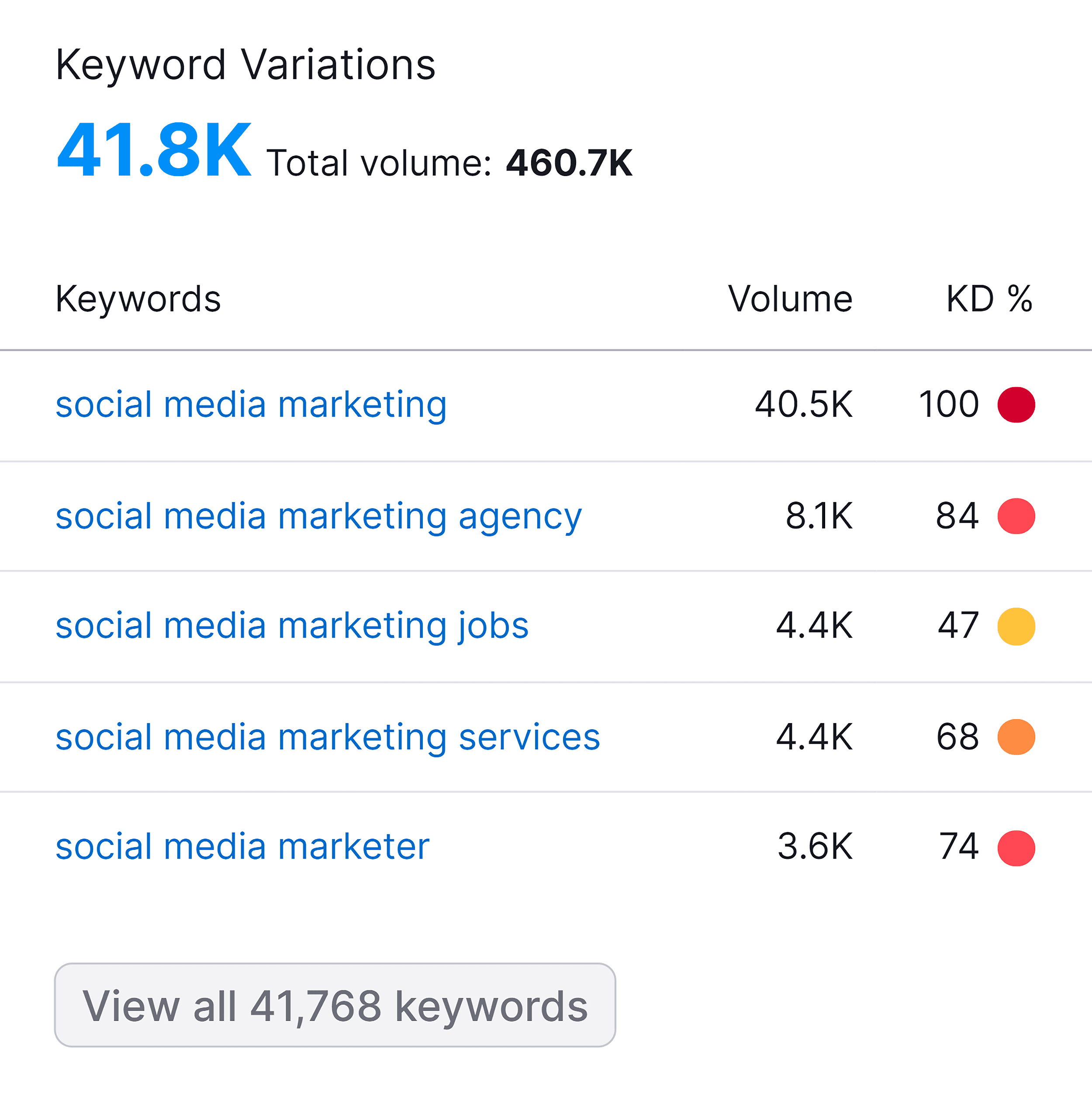
Yeah, there may be some long tail keywords that you hadn’t thought of here. But for the most part, it’s not great for uncovering new keywords.
On the other hand, the list of related “questions” IS really helpful.
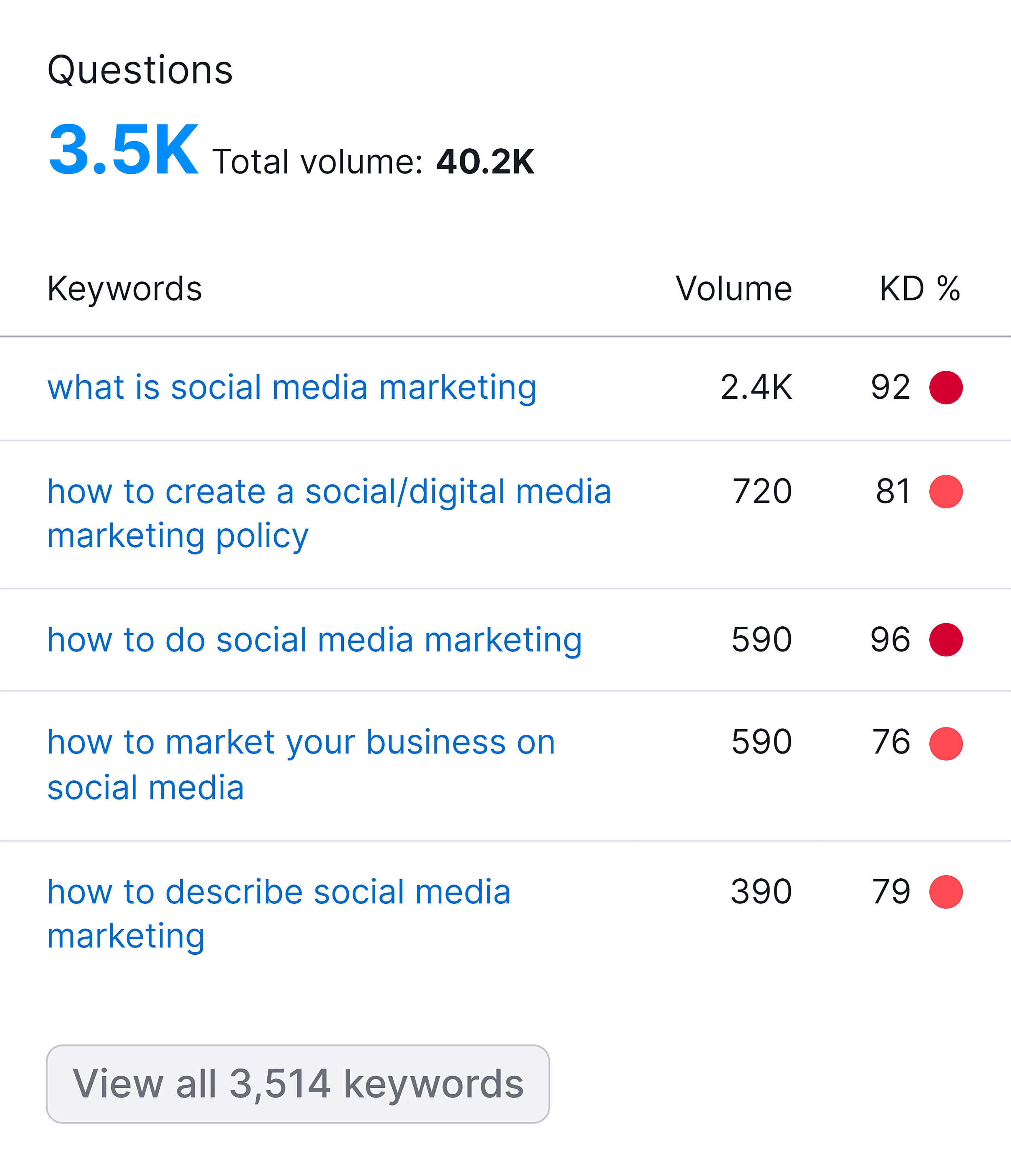
That’s because it generates questions that I probably wouldn’t have thought of on my own (which is kind of the point of using a keyword research tool in the first place).
“Related keywords” is a list of terms that are on the same topic as the one you put in. But the terms on this list may not use the same keyword that you used as your seed keyword.
For example, here are a few related keywords for “website traffic”:
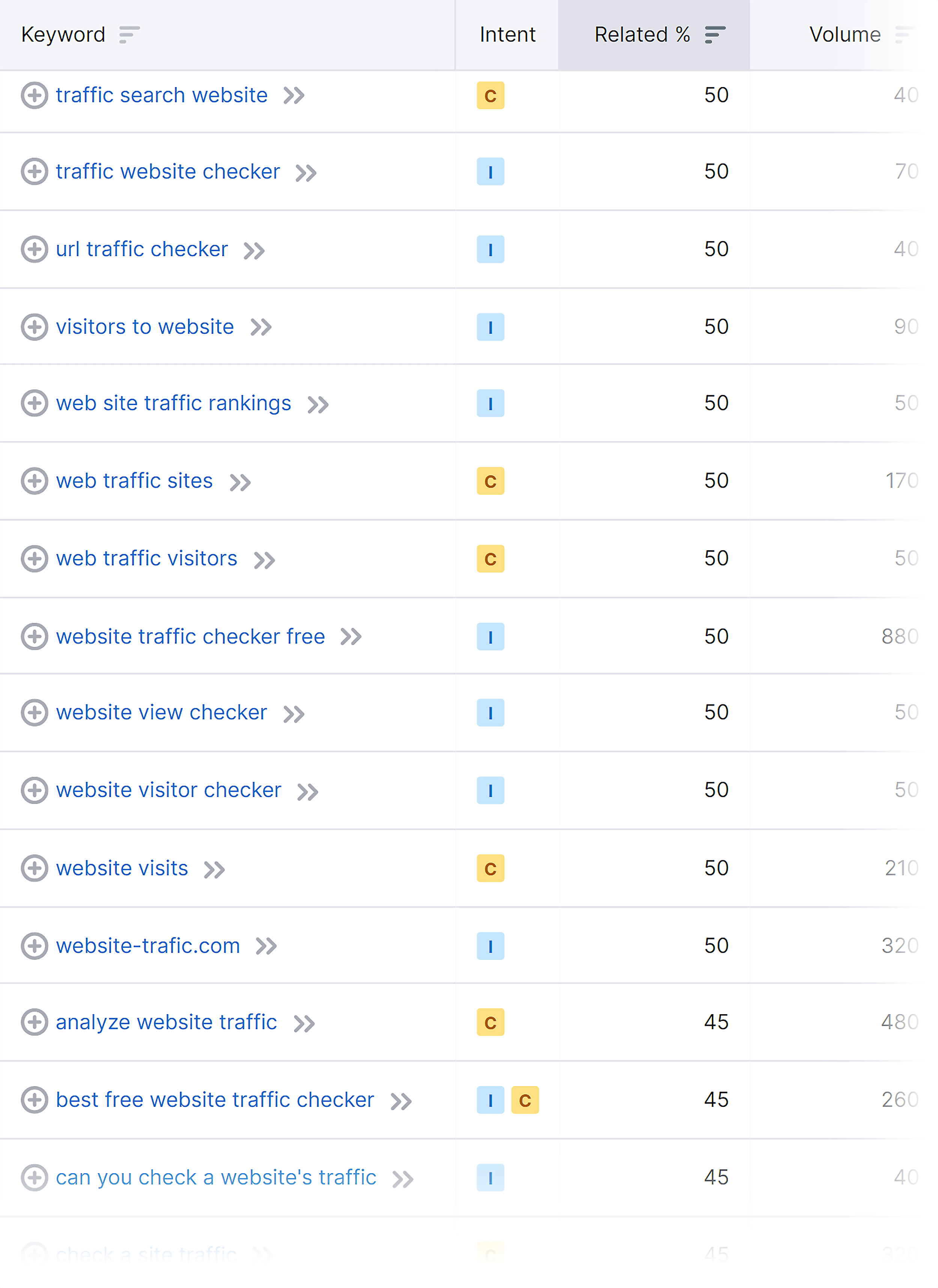
As you can see, most of these related keywords include the phrase “website traffic”. But some don’t.
Which is helpful for coming up with lateral keyword ideas that would be tough to think of on your own.
Keyword Gap
Keyword Gap is another cool little feature for keyword research in Semrush.
This feature compares your keyword ranking with a handful of competitors.
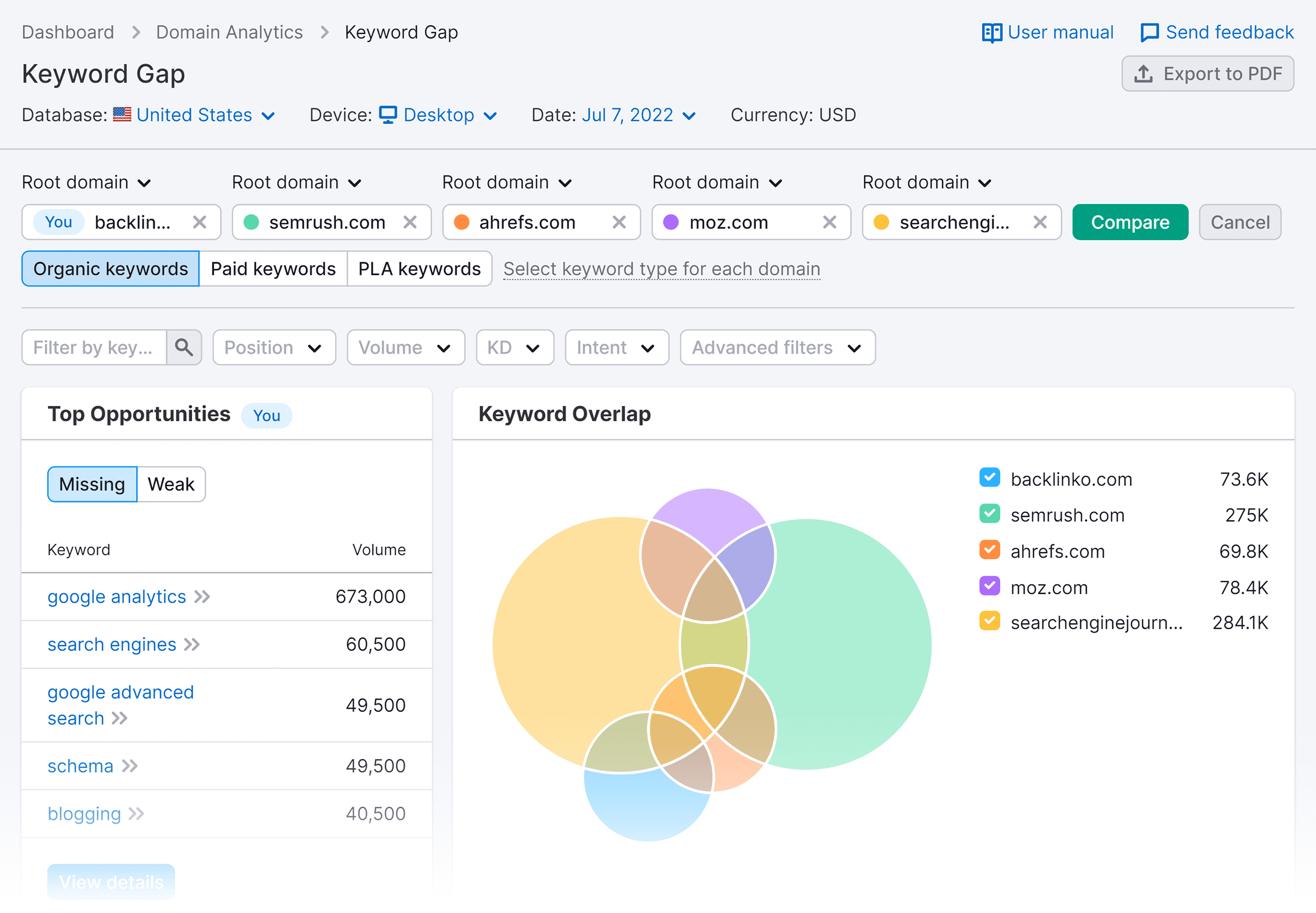
The idea here is that you can find keywords that many of your competitors rank for in Google. But you don’t.
And overall, it works super well.
(Note: this assumes that you put in competing sites that are on the same level as you are in terms of domain authority and overall SEO. If you analyze a bunch of Fortune 500 company sites here, it’s not going to be super useful.)
For example, when I analyzed a handful of competitors, Semrush found a list of keywords that I should optimize around.

You even get a list of terms that you and your competitors all rank for.

That way, you can find keywords that are ranking OK. But have the potential to rank higher with some on-page optimization or link building.
For example, my local SEO guide is ranking #4 in Google. But two of my competitors are ranking above me.
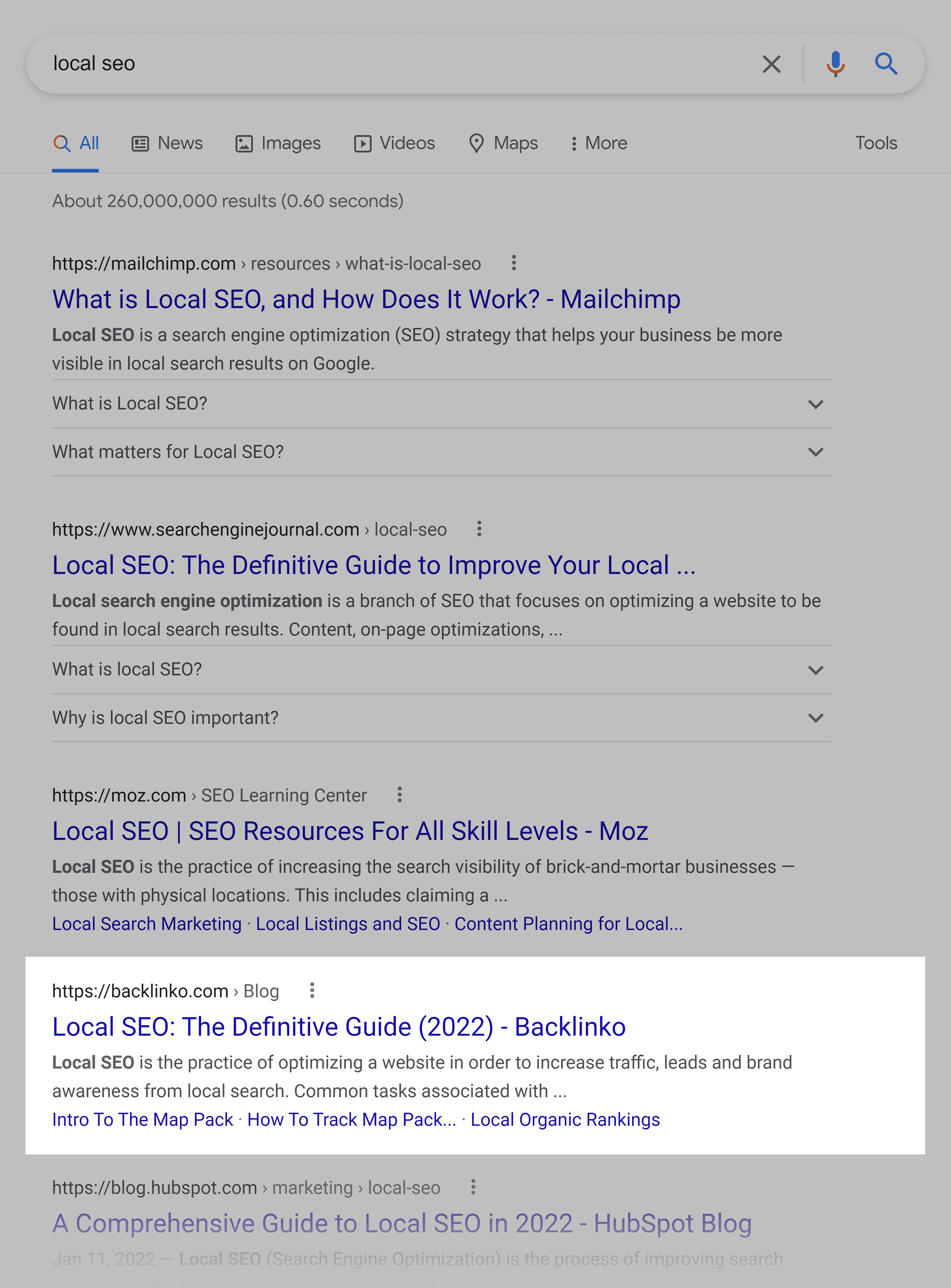
So instead of spending time on a completely new piece of content, I might be better off working to improve that page.
Topic Research Tool
This tool is more for content marketing than straight up SEO.
Here’s how it works:
Enter a topic that you want to write about on your blog. And Semrush will find a bunch of related topics. And specific pieces of content that have done well.
(Similar to BuzzSumo.)
For example, when I put “Digital Marketing” into this feature, it listed a bunch of similar topics.

But it also listed out a few strange topics that didn’t really make much sense.

All in all, I’d say that this feature has a lot of potential. And as long as you ignore some of the weird topic ideas, you can find LOTS of topics to write about.
SEO Content Template
SEO content template is Semrush’s version of Clearscope.io.
In other words: it scans the top 10 results in Google’s organic search for the keyword that you want to rank for.
Then, it finds words and phrases that these pages use in their content.

The idea here is that these pages rank partly because they cover a topic in-depth. And use the type of LSI Keywords that Google wants to see for that topic.
To be clear: LSI keywords aren’t an SEO magic bullet. But using them CAN help Google see your content as more thorough, which can improve your Google rankings a little bit.
This feature doesn’t just hand you a list of LSI keywords. You can also check your content in real time.
For example, when I copy and paste one of our recent posts into the tool, I get a “Good” grade.
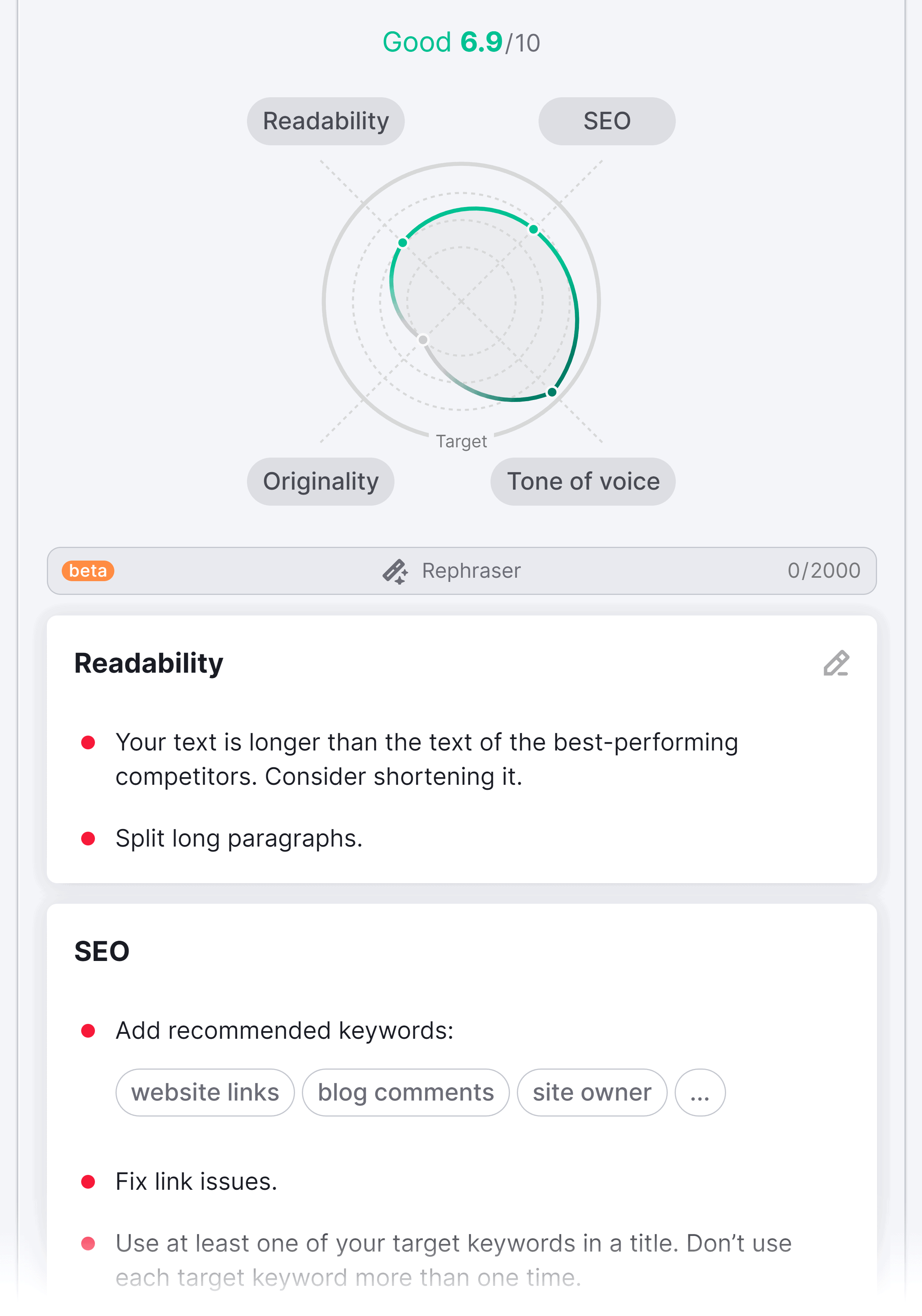
It also gives me a few terms that I should add to my post.
Overall, the SEO Content Template is one of the best tools out there for finding relevant LSI keywords to add to your content.
But it’s not perfect.
I don’t really get why the tool also analyzes readability. Or why it would suggest that my text is “too simple”.
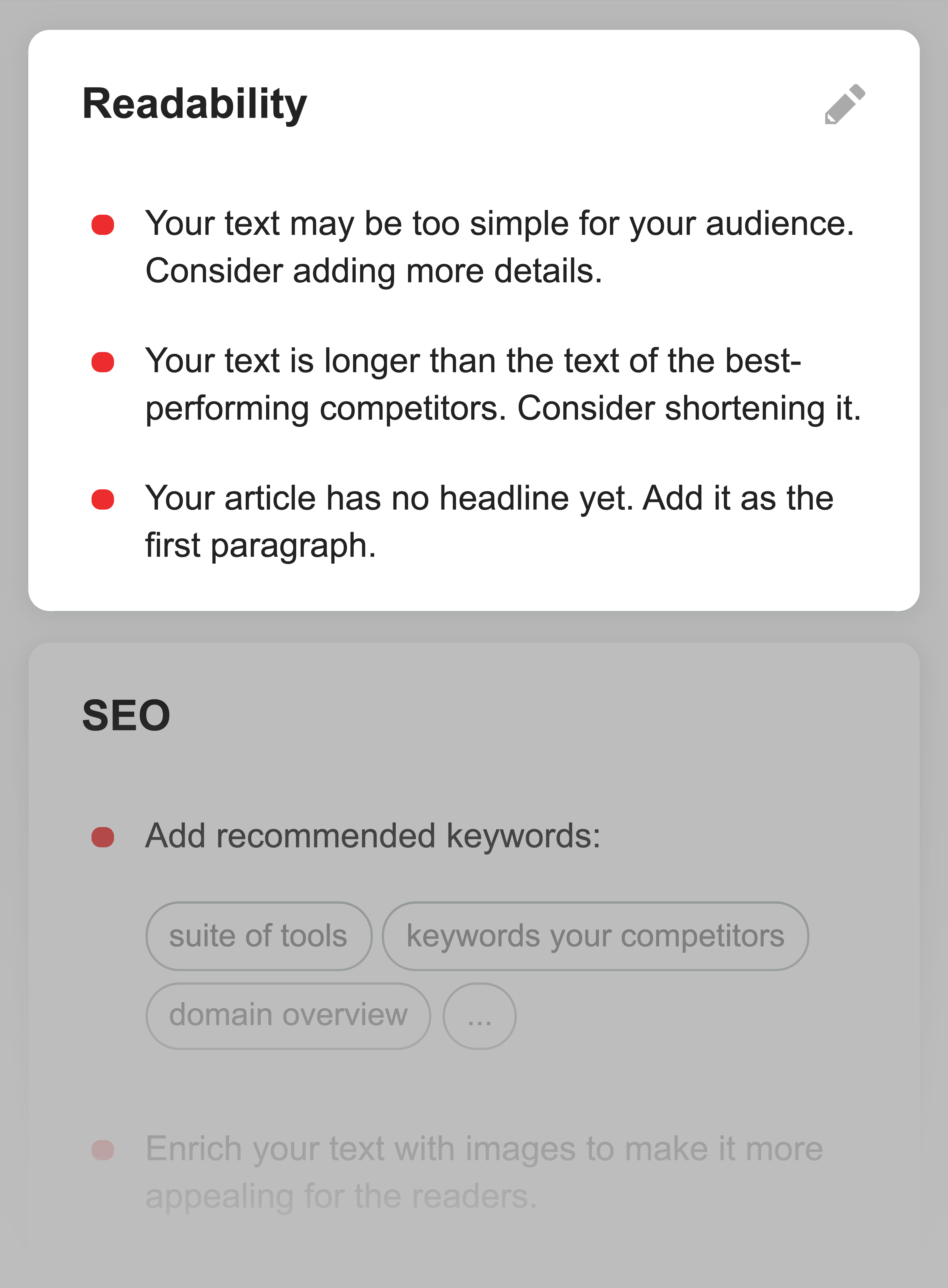
That doesn’t really make sense. There’s nothing wrong with making your content easy to read and understand. But they make it sound like a bad thing.
It’s the same story as their “tone of voice” recommendations. It says that I need to fix sentences that are “very casual”.

To me, these recommendations aren’t helpful. And they definitely don’t make my writing any better.
So I kind of wish that they just stuck to SEO stuff here. And left the readability stuff to a dedicated writing assistant tool like Grammarly.
Position Tracking
This is Semrush’s rank tracking feature.

Like any rank tracker, this one shows you how your rankings have shifted over time, your site’s overall search engine visibility, and your rankings distribution.
Being a track tracker, there isn’t much to say here. They’re basically all the same. Enter a list of target keywords. And the tool will automatically check your Google rankings.
That said, overall, Semrush’s position tracking is solid.
Site Audit
Semrush has a pretty legit SEO site audit tool built into it.

In my opinion, this is one of the better SEO audit tools on the market (right up there with Ahrefs).
That’s because their “Site Health” percentage score makes it easy to size up your site’s overall technical SEO health.
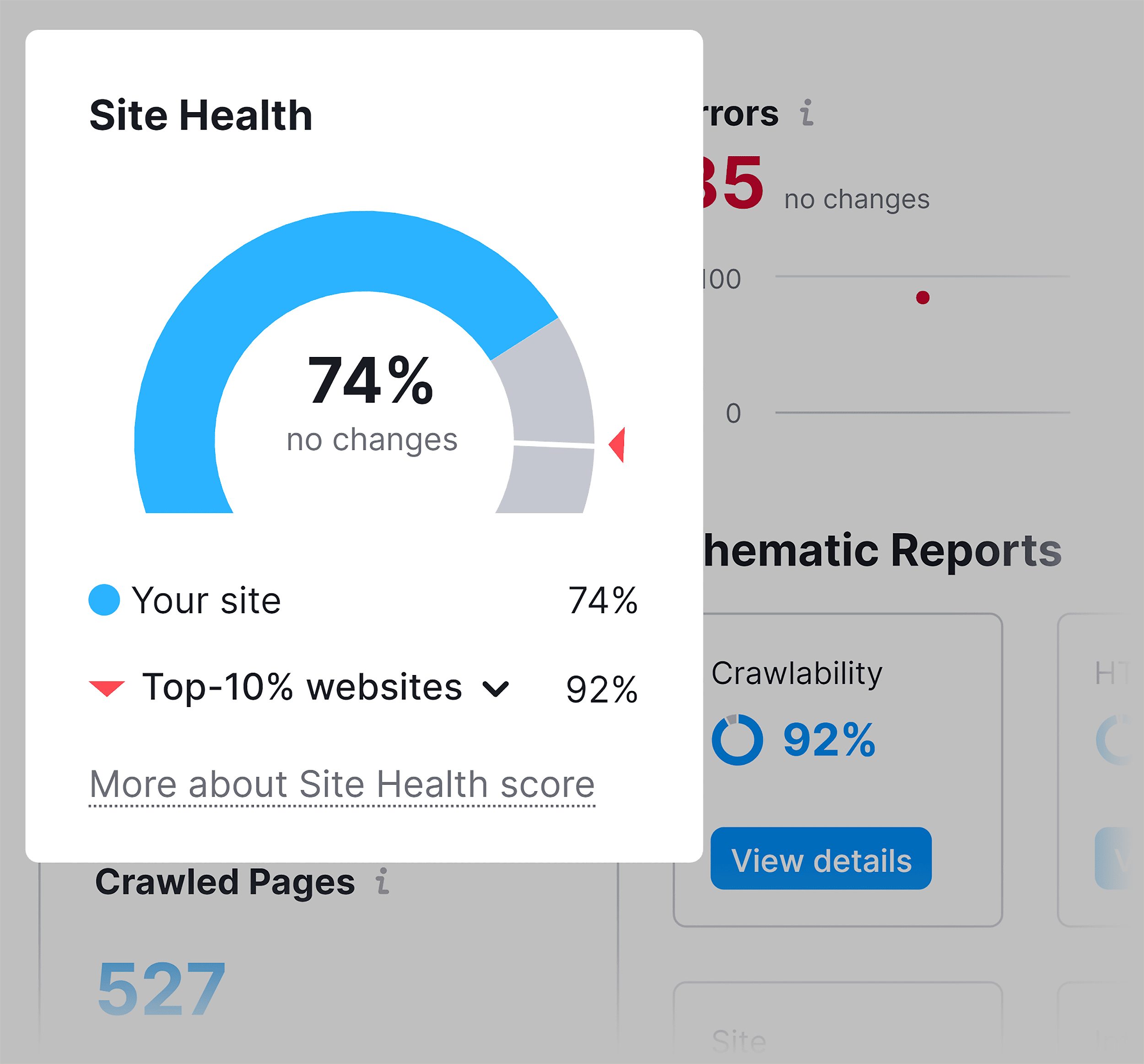
But if you want to get into the weeds, you can.
For example, if you’re an eCommerce site with thousands of pages, Semrush will scan them all. And give you plenty of things you can do to improve your site’s crawlability, indexing, internal linking and overall performance.
For example, my site has a site health score of 74%.
That’s not bad. But, as you can see, there’s plenty of room for improvement.

Specifically, some of my pages have a large HTML size (which hurts page loading speed). This tool also tells me that I need to cache more of my CSS.
These are definitely nitpicky things that won’t make a big difference in your rankings. But if you want to make sure that your site’s technical SEO is 100% on point, Semrush’s audit tool is a great way to do it.
Link Building Tool
Most SEO tools give you tons of data. But they leave the execution up to you.
“Link Building Tool” is designed to change all that.
Instead of having one tab open to Semrush. And another one for sending outreach emails. Semrush’s Link Building Tool ties them together.
That way, you can actually do your work without having to leave the platform.
You can use this feature for link prospecting (finding sites and pages that are likely to link to you).

You can also use this tool to send outreach emails and track your results.
Overall, Semrush’s Link Building Tool is a solid feature that its competitors (like Ahrefs and Moz) don’t have.
Semrush Support
I outlined my experience with Semrush’s customer support in my Ahrefs vs. Semrush comparison.
Semrush offers live chat while logged in:

Overall, their support is excellent. And fast.
Semrush Pricing
Here’s the full breakdown of Semrush’s current pricing:
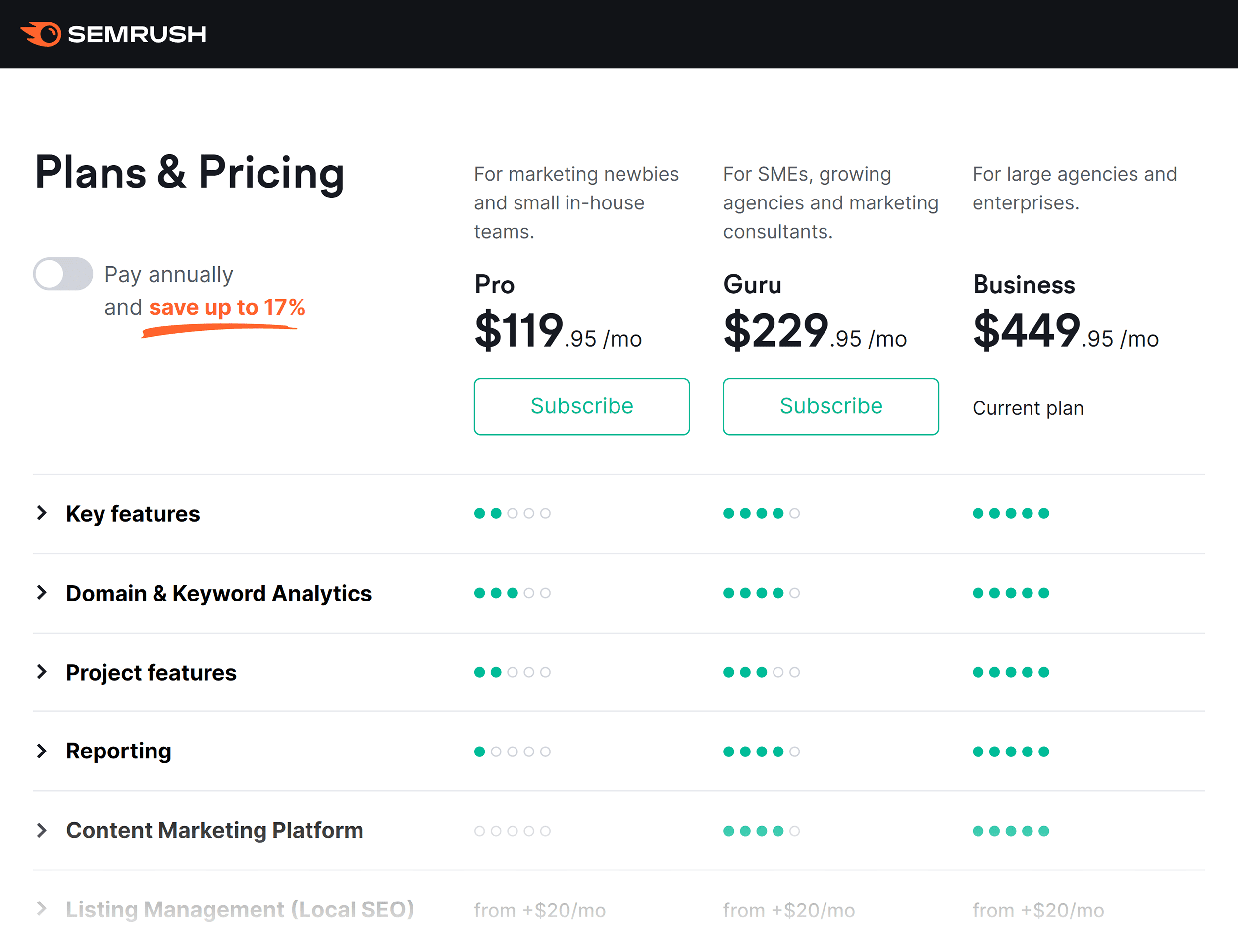
They have three main tiers: Pro, Guru and Business.
Semrush’s Pro plan is pretty much on par with Moz and Ahrefs. They all start at about 100 bucks per month.
The difference with Semrush is that they have a much cheaper Enterprise tier than their competitors.
For example, the most expensive Ahrefs plan (Agency) is $999/month. And Moz’s top-tier plan is $599/month.
Semrush’s enterprise plan (“Business”) is only $449.95/month.
So if you’re an agency that needs a ton of features, data, and PDF reports to send to clients, Semrush is a solid value.
But if you’re just starting out, Semrush’s lower-tier pricing is basically a 1:1 match to its major competitors.
Semrush: Things I Like
First, let me cover some of the highlights that I found during this Semrush review.
Reliable, Up-to-Date Data: Data is the backbone of an SEO tool like Semrush. And Semrush’s SEO and PPC data are world-class.
Unified Platform: One of the strengths of Semrush is that everything is connected. Which can make some of their features faster and easier to use.
For example, when you analyze a site’s organic rankings, you can quickly see that site’s backlinks, traffic stats, and more.
Unique Set of SEO and PPC Features: This SEO toolkit has so many features that I didn’t have a chance to cover all of them in this review. For example, I didn’t even talk about their Keyword Magic tool. Which can generate thousands of keyword ideas.

And there’s an entire Semrush Content Marketplace that you can use to order articles.
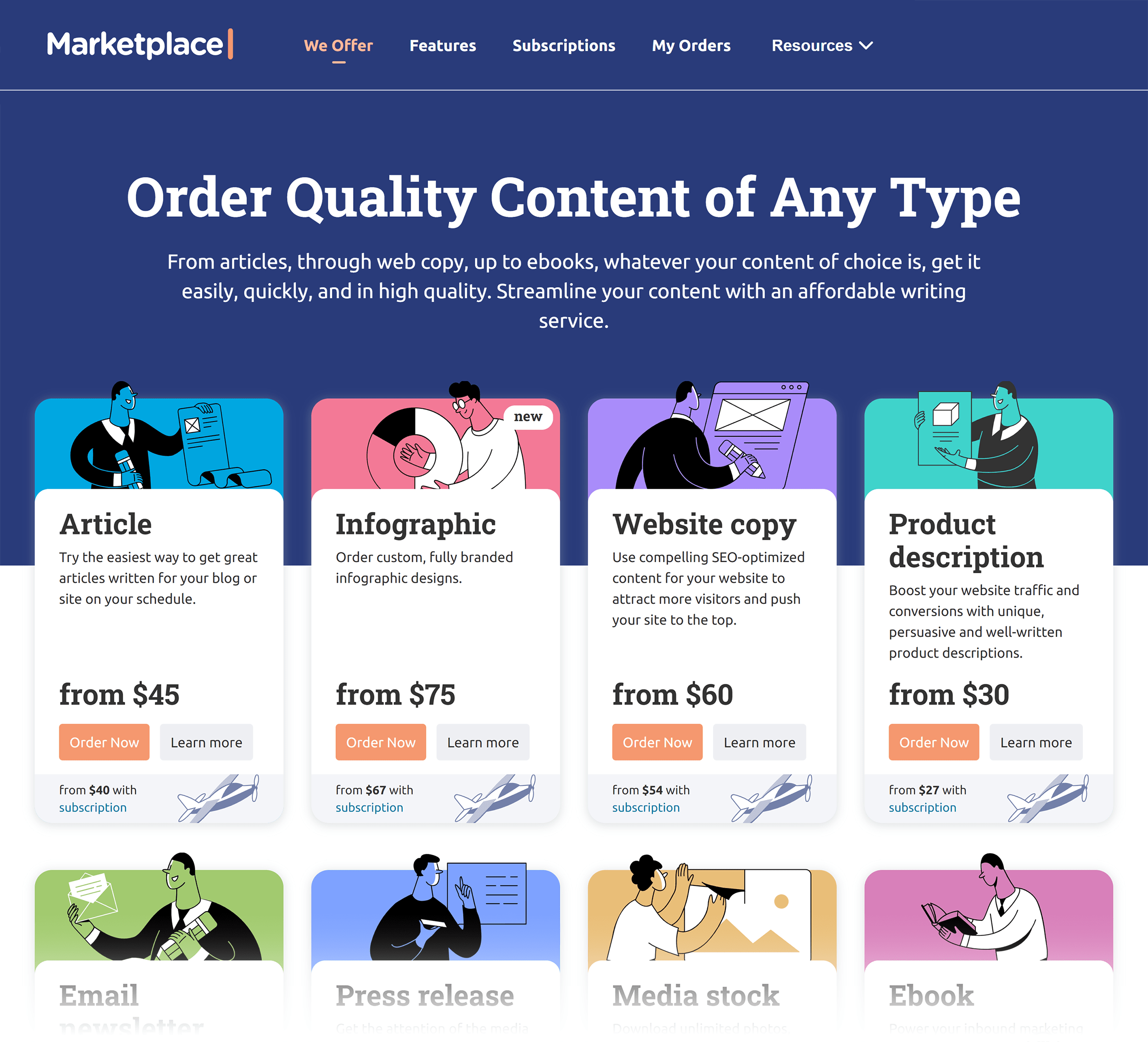
So yeah, there are a TON of features inside Semrush. Most of them are solid. Some of them need work. But there’s no question that Semrush is always innovating and adding new features to its platform.
Semrush: Things I Don’t Like
Here are some things about Semrush that I wasn’t too fond of.
Organic Traffic Estimates Can Be Off: Like any SEO tool, Semrush’s organic traffic estimates aren’t always super accurate.
Lacking Keyword Breakdown Feature: If you want to really dig into a single keyword, Semrush does the job. But Ahrefs is way better in this regard.
Why? Ahrefs gives you MUCH more data to work with. Data that helps you decide whether or not a keyword makes sense for you.
For example, in Ahrefs you don’t just get monthly search volume. They also show you how many people click.
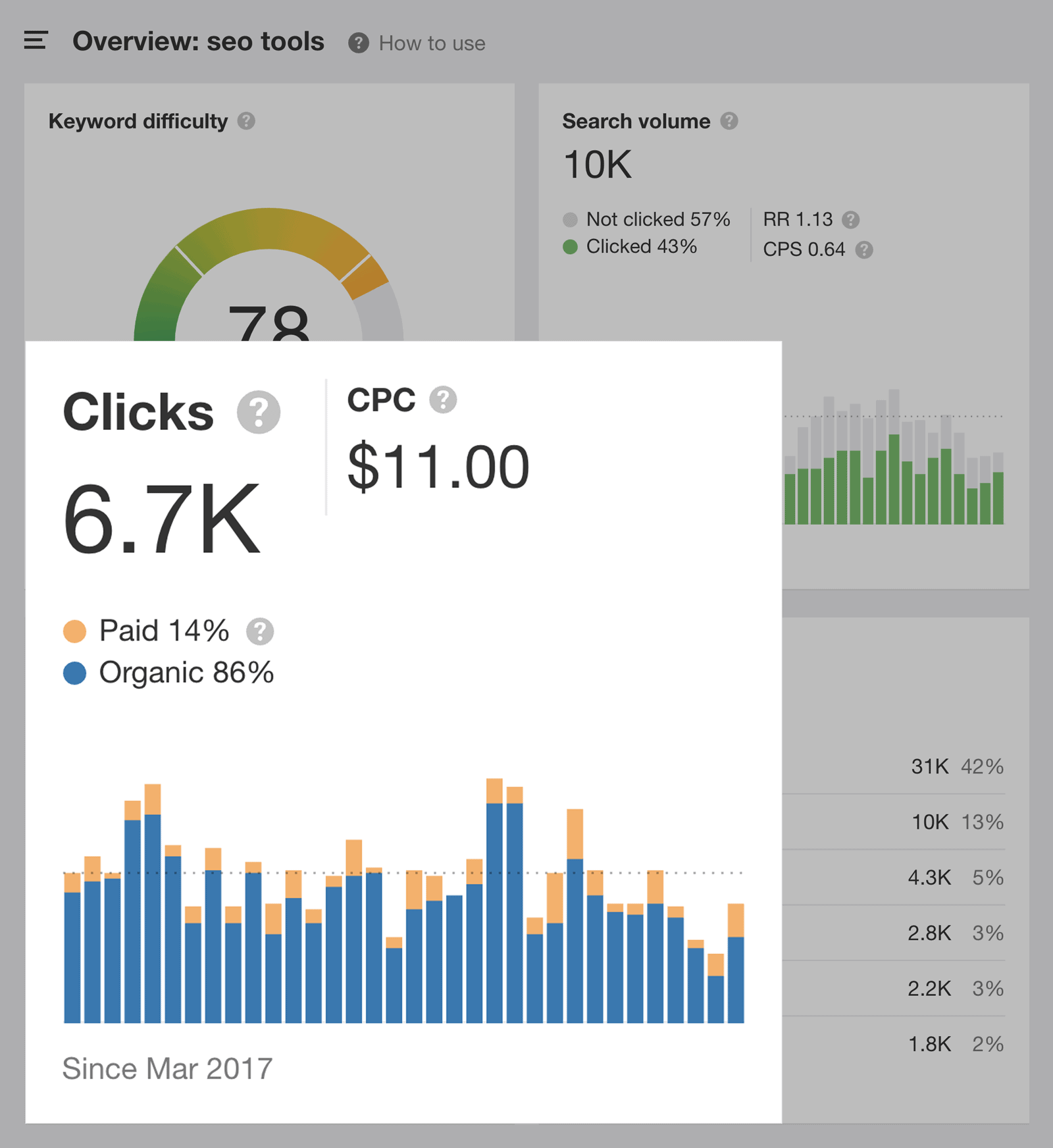
You can also see how many people click on ads compared to the organic results.
This is helpful data that Semrush doesn’t have.
Click-Heavy UI: As you can probably tell from reading through this review, the platform has A LOT of features. This means that it usually takes 3-5 clicks to get to the specific report that you need.
The Bottom Line: My Semrush Review
Semrush has a set of industry-leading features that are backed by a large index of keywords, backlinks and ad copy. This is why Semrush has become one of the most popular and trusted marketing tools on the market.
Personally, I’ve been paying for Semrush every month for almost 10 years now.

I do SEO all day long. So I find myself logging into Semrush all the time to check my own site’s SEO health and rankings. I also use it a lot for competitor research.
I don’t even really use their PPC features that much. And I ignore a lot of their other features (like their link-building tool).
Even though I only use maybe 10-15% of what Semrush offers, I still get enough value out of it to justify my monthly payment.
You might not get as much value from the tool if you’re not that big into SEO or PPC.
But if SEM is a big part of your marketing, I recommend Semrush.
Conclusion
There you have it: my comprehensive review of Semrush.
Now I’d like to turn things over to you:
Have you used Semrush before?
If so, what are your overall impressions? Good? Bad? Somewhere in between?
Let me know your opinion in the comments section below.
